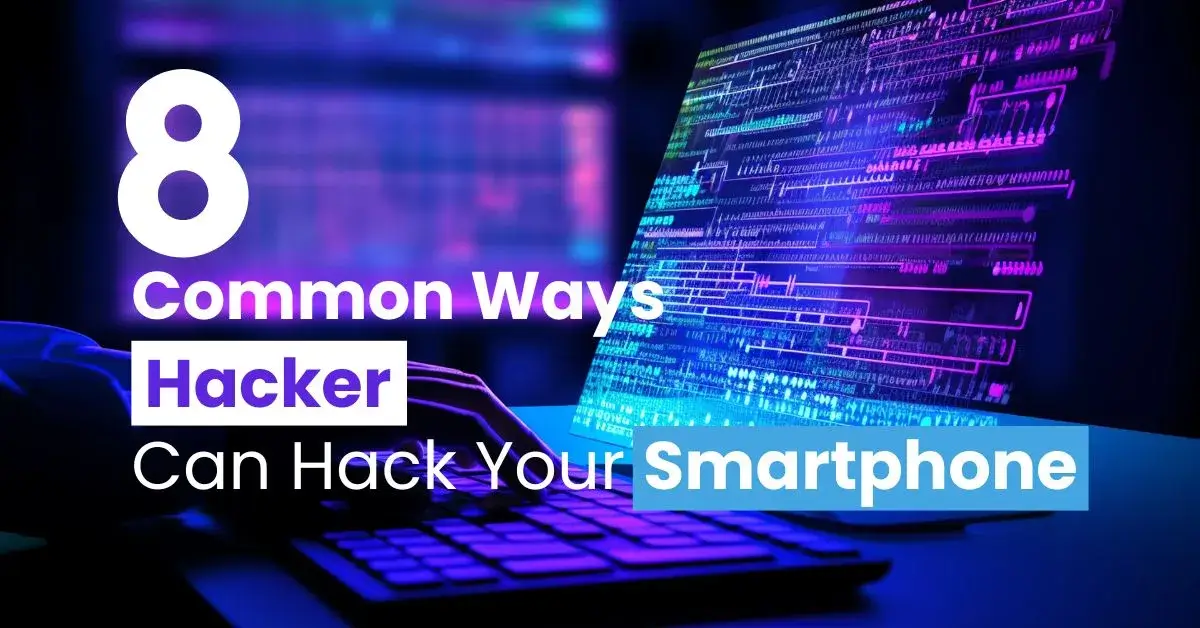With smartphones being an essential part of our daily lives, they have become a prime target for hackers. From personal photos and banking information to sensitive data, the amount of valuable information on your phone is immense. Hackers are always on the lookout for ways to infiltrate smartphones and exploit this information. But how exactly do they do it? Let’s dive into some of the most common ways hackers can hack your smartphones and how to protect yourself.
1. Phishing Attacks
Phishing is one of the oldest tricks in the hacker’s book, and it’s still highly effective. A hacker might send you an email, SMS, or even a fake app notification that looks legitimate. These messages often contain links to malicious websites designed to steal your personal information, like passwords or credit card numbers. Clicking on these links can allow hackers to gain access to your phone and data.
How to protect yourself:
- Be cautious of suspicious links and messages.
- Avoid opening emails or messages from unknown senders.
- Double-check URLs before clicking on any links.
2. Insecure Wi-Fi Networks
Public Wi-Fi networks in cafes, airports, or malls are a playground for hackers. Since these networks are often unsecured, hackers can easily intercept your phone’s connection, allowing them to see what you’re doing and even steal sensitive data like login credentials or credit card information.
How to protect yourself:
- Avoid accessing sensitive accounts (like banking apps) on public Wi-Fi.
- Use a VPN (Virtual Private Network) to secure your connection.
Also Read:
3. Malicious Apps
Some hackers develop fake apps that mimic popular applications. Once you install one of these apps, it can grant the hacker access to your phone’s data, including photos, contacts, and even your microphone or camera.
How to protect yourself:
- Only download apps from official stores like Google Play or Apple’s App Store.
- Check app reviews and developer information before downloading.
- Keep your apps updated to close any security loopholes.
4. SIM Card Swapping
SIM card swapping is when a hacker tricks your mobile carrier into transferring your phone number to their SIM card. With this, they can receive your calls and text messages, including any two-factor authentication (2FA) codes sent to your number, allowing them access to your accounts.
How to protect yourself:
- Use an authentication app (like Google Authenticator) for 2FA instead of relying on SMS.
- Add a PIN or security question to your mobile carrier account to prevent unauthorized changes.
5. Bluetooth Hacking
If you leave your Bluetooth on and discoverable, hackers can exploit vulnerabilities in Bluetooth connections to access your phone. Once connected, they may be able to steal your data or even install malware without you realizing it.
How to protect yourself:
- Turn off Bluetooth when you’re not using it.
- Set Bluetooth to “non-discoverable” to prevent unauthorized access.
6. Social Engineering
In social engineering attacks, hackers use psychological manipulation to trick you into giving up confidential information. They might pose as a customer service agent or even pretend to be someone you know to get access to your phone or sensitive data.
How to protect yourself:
- Be sceptical of unsolicited calls or messages asking for personal information.
- Verify the identity of anyone asking for sensitive information.
7. Spyware
Spyware is malicious software that, once installed, can monitor everything you do on your phone. This could include logging your keystrokes, tracking your location, and recording conversations. Spyware often hides in apps or downloads that seem harmless at first.
How to protect yourself:
- Install reliable antivirus or anti-malware apps.
- Regularly scan your phone for suspicious activities.
- Avoid downloading files from untrustworthy sources.
8. Man-in-the-Middle (MITM) Attacks
In a MITM attack, hackers intercept the communication between you and a website, often on an unsecured Wi-Fi network. This allows them to steal sensitive data, like login credentials or financial information, as it is being transmitted.
How to protect yourself:
- Only visit secure websites that use HTTPS.
- Use a VPN when browsing the internet on public networks.
Your smartphone contains a wealth of personal information, and hackers are constantly finding new ways to access it. By being cautious and implementing security measures like using VPNs, avoiding suspicious links, and downloading apps from trusted sources, you can significantly reduce the risk of your phone being hacked.

